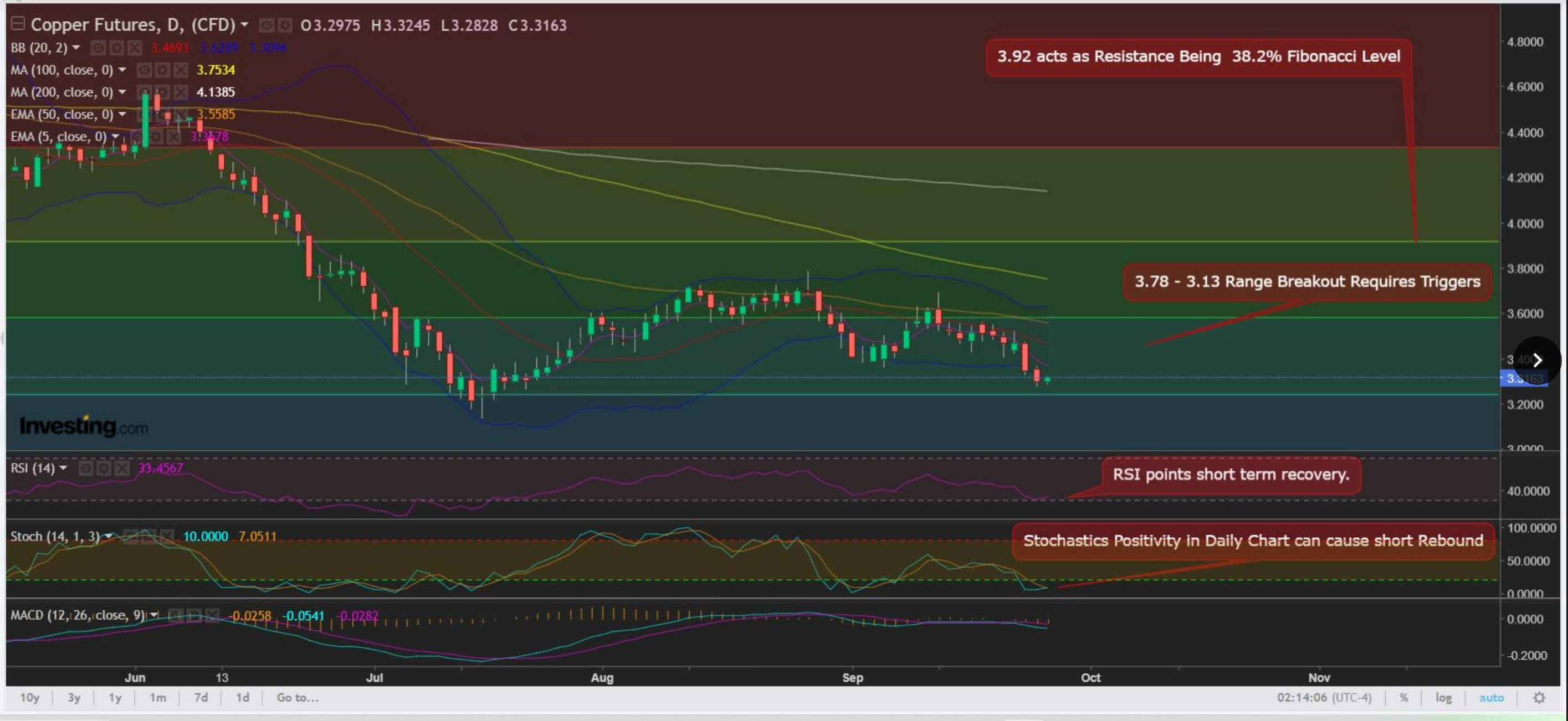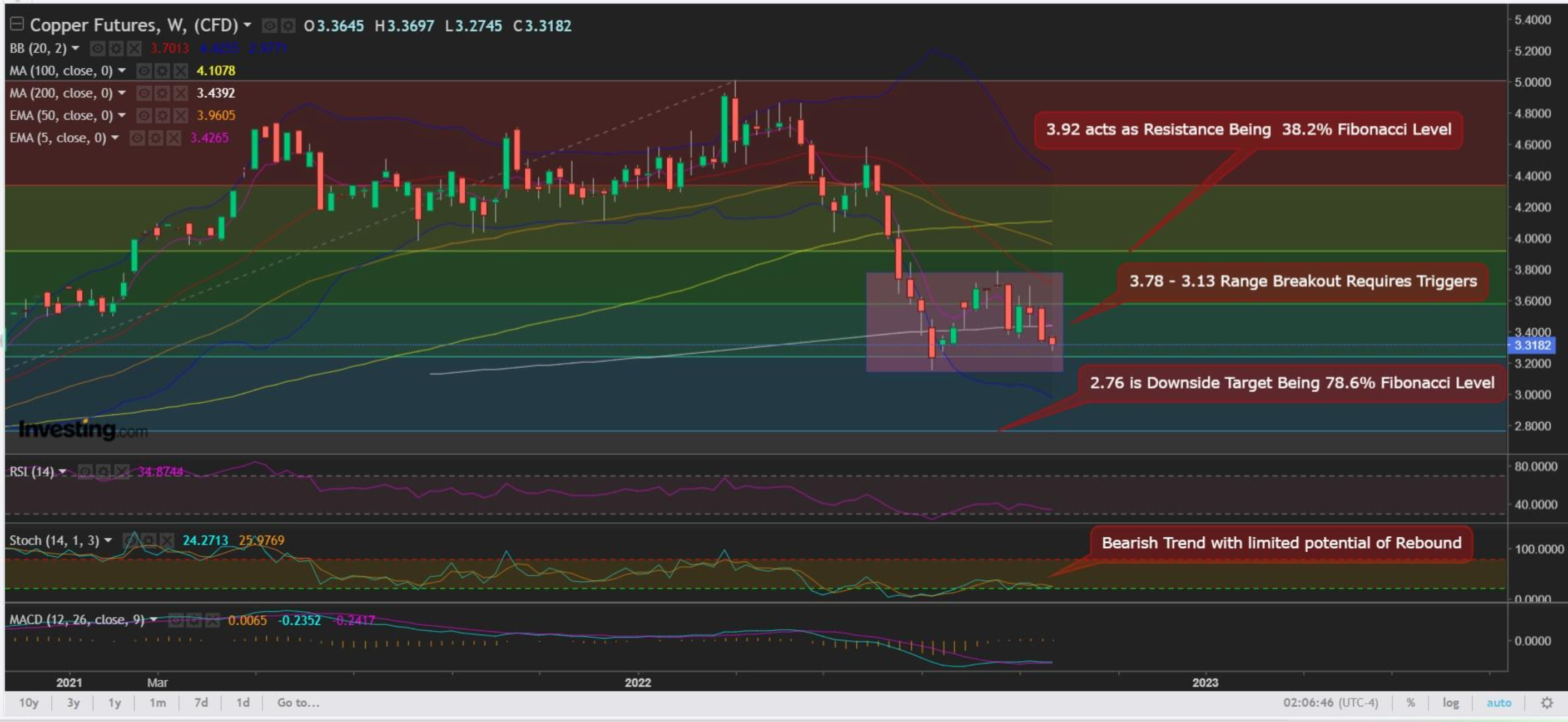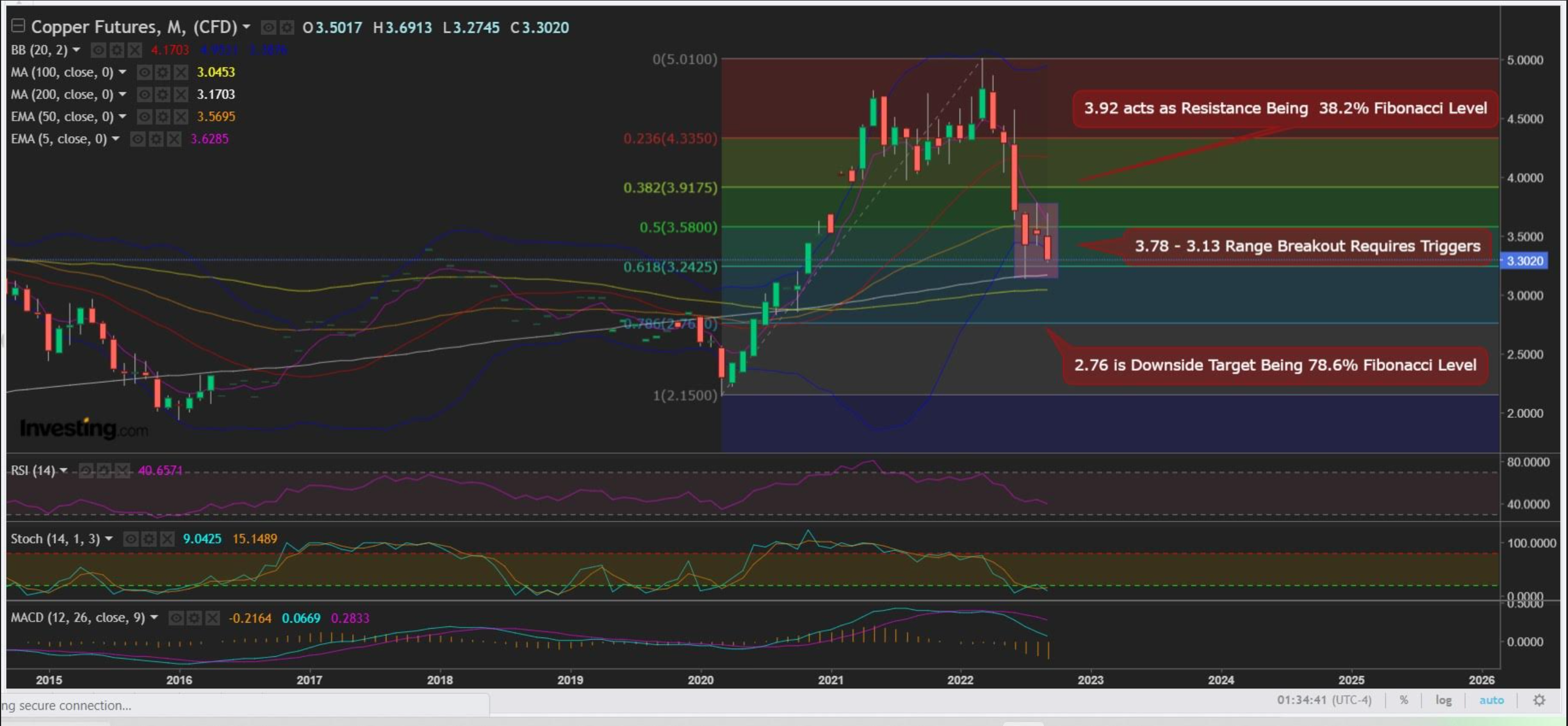- Copper is down 25% on the year, slid in five of the past six months
- $3 support held since November 2020 could break
- Commodities pulverized by a dollar enabled by hawkish Fed talk
Exactly two months back, we asked in an analysis on copper whether the No. 1 industrial metal was on the cusp of a rebound from its four-month-long selloff.
Fast-forward to Sept. 27 from July 27 and little has changed for those long copper. Bulls invested in the so-called red metal are still staring at a near-25% loss on the year.
What's different is that the four-month-long selloff in copper has extended to five months out of six.
What could also change is the price of copper itself.
For the first time in almost two years, the metal—used in almost everything from the micro-circuitry of cellphones to the turbines channeling great megawatts of electricity at power stations—is on the verge of losing its $3 per pound support.

Charts by SKCharting.com, with data powered by Investing.com
In Monday's futures trade on the New York Mercantile Exchange's COMEX, copper for December delivery hit a 22-month low of $3.2745 a pound.
That was after the record high of $5.01 in early March, a phenomenon not exclusive to copper as most commodities reacted positively then to fears of a global jam in resource supplies after the breakout of the Russia-Ukraine war.
The all-time highs in copper came from a market that had been trending higher since 2018, turning around an extended decline that started in 2010.
Now, the likelihood of copper cracking its $3 support looks very real, due to the merciless onslaught of the dollar, which has been making 20-year highs almost daily over the past week. A strong dollar is an anathema to commodities priced in the currency, including copper, as it raises transaction/acquisition costs for commodity traders using the euro and other currencies.
The dollar's ramp-up has been fueled by the incessant hawkish chatter of Federal Reserve officials on how much longer the central bank's rate hikes could continue.
Four Fed regional chiefs—from Atlanta's Raphael Bostic to Boston's Susan Collins, Dallas' Lorie Logan, and Cleveland's Loretta Mester—collectively indicated on Monday that inflation will be a menace to the US economy for another year at least and that a recession was still possible. The only way for the Fed to beat this is not to be shy with rate hikes, they intimated.

So, back to the question that really matters
Will copper lose its $3 grounding, which it has held since November 2020 in COMEX futures trade on the New York Mercantile Exchange?
Or will the metal, which by all technical indicators, is way oversold, rebound before that?
Sunil Kumar Dixit, chief technical strategist at SKCharting.com, says a low of $2.76 might be possible. Such a bottom has not been seen in copper since June 2020, when it traded as low as $2.48.
Noting that COMEX copper was in a range of $3.78 - $3.13, awaiting triggers for a breakout in either direction, Dixit writes:
"As long as copper sustains below $3.58 (which marks a 50% Fibonacci retracement of its $2.15-$5.01 upswing) and under the 200-Week Simple Moving Average of $3.44, we can expect the bearish momentum to continue."
"In these circumstances, a retest of $3.15 is likely. Further correction could lead to $2.76, marking a 78.6% Fibonacci retracement of the earlier upswing."

Copper saw a brief rally at the beginning of this month, one that came ahead of the Fed's latest 75 basis point rate. But it was too brief to really matter, reaching a high of just $3.6925 on Sept. 12, before the Sept. 21 rate hike.
Investors are fleeing from risk across markets as the Fed and other central banks embark on the most aggressive rate hikes in 40 years to fight inflation. The Fed itself has raised rates by 300 points this year and plans to add another 125 by December, after starting from a base of just 25 points in February.
Copper's correlation with the economy is so tight that it's sometimes called Dr. Copper—the logic being that one could simply forecast world growth by studying demand and prices for the metal. The higher the demand and prices, the greater the growth potential.
Prices of copper and other commodities "remain highly volatile in the face of competing macro economic pressures, particularly repeated COVID-19 lockdowns and the current crisis in the real estate sector in China," Capital.com cautioned in an outlook published Sept. 12.
Some research on copper remains favorable though
Algorithm-based forecasting site WalletInvestor forecasts an end-2022 price of $3.61 and a 2025 closing of $5.18.
Mining.com adds:
"While the copper price has seen some recent turmoil due to fast-rising interest rates and weak economic data, what remains steadfast is how much the world needs copper, as the highly conductive metal is a key component of industrial infrastructure and electric vehicles."
In August, Sucden Financial noted in its quarterly monthly report that Europe will likely enter a recession before the United States and will take longer to recover, "but material availability [to the Eurozone] is significantly lower, shown by low inventories."
"Off-exchange stocks [of copper] are high but the low liquidity, volumes and inventories indicate higher volatility and sharp moves, although the options market shows traders positioned for the downside."
Disclaimer: Barani Krishnan uses a range of views outside his own to bring diversity to his analysis of any market. For neutrality, he sometimes presents contrarian views and market variables. He does not hold a position in the commodities and securities he writes about.
